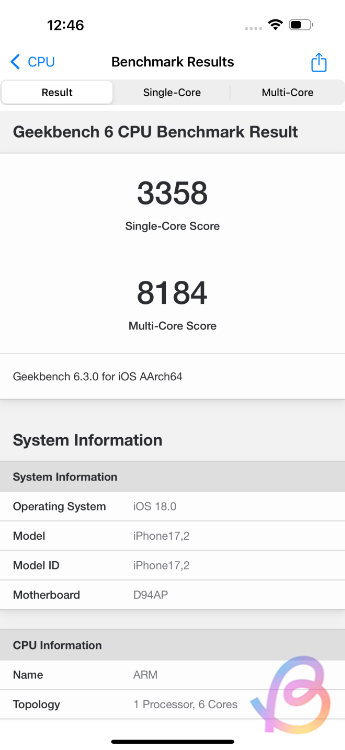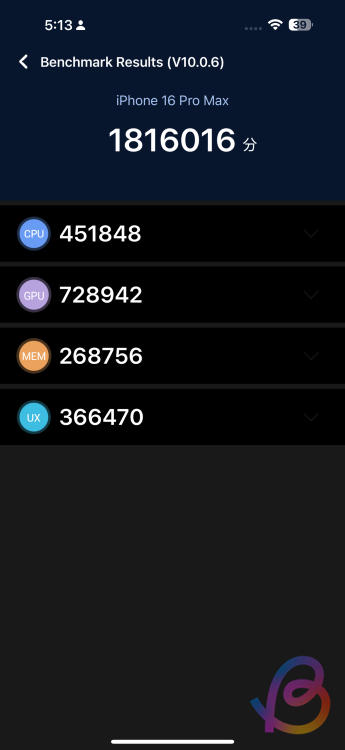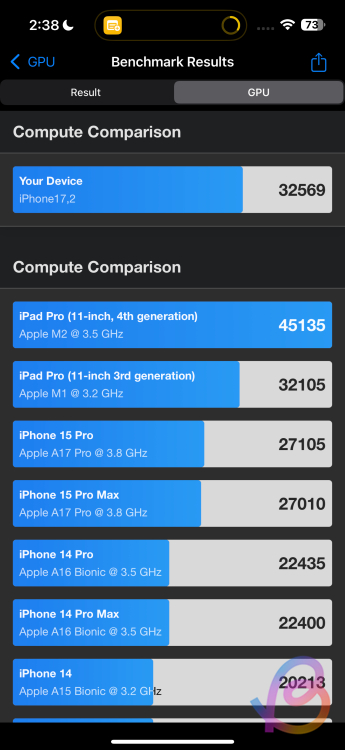Apple has started shipping the iPhone 16 Pro series, and we have already received the larger iPhone 16 Pro Max. The flagship A18 Pro chipset powers it and promises great performance and efficiency. So, without further ado, we ran various benchmark tests on the A18 Pro, including Geekbench, 3DMark, AnTuTu, Geekbench AI, and more. So to check the results, let’s go through the article.
A18 Pro specifications
| Features | A18 Pro |
|---|---|
| Processor | Six-core processor (2+4) |
| Processor Cores | 2 performance cores at 4.05 GHz 4 cores of 2.42 GHz efficiency |
| Process technology | TSMC’s 3nm process (N3E) |
| GPU | Apple 6-core GPU Hardware accelerated ray tracing |
| Memory Support | LPDDR5X, up to 7500 MT/s |
| Machine Learning and AI | 16-core Neural Engine; 35 TOPS |
| Modem | Snapdragon X75 5G Modem Up to 10 Gbps peak download speed Up to 3.5 Gbps peak download speed |
| Connectivity | Wi-Fi 7, Bluetooth 5.3 |
A18 Pro: Geekbench 6 processor
In the Geekbench 6.3 CPU test, the iPhone 16 Pro Max, powered by the A18 Pro chipset, scored 3,358 in single-core tests and 8,184 in multi-core tests. The score is slightly lower than what we got on iOS 17. That’s because Apple is delaying the frequency increase on iOS 18 to preserve battery life.

A18 Pro: AnTuTu benchmark test
Next, the A18 Pro scored 1,816,016 points in the AnTuTu benchmark test, without breaking the 2 million mark. However, in the CPU department, it scored 451,848 points, and the 6-core GPU achieved 728,942 points.
| AnTuTu Reference | Score |
|---|---|
| A18 Pro AnTuTu Score | 1 816 016 |
| Processor | 451 848 |
| GPU | 728 942 |
| Memory | 268,756 |
| UX | 366 470 |

A18 Pro: Geekbench 6 GPU
In the Geekbench 6 GPU test, the A18 Pro’s 6-core GPU achieved a total score of 32,569 points. The test was performed on Apple’s Metal graphics API which offers comparable performance to the Apple M1 GPU. Compared to the A17 Pro GPU, the A18 Pro GPU is about 20% faster, which is excellent.

A18 Pro: 3DMark Wild Life extreme stress test and solar array
To further test the A18 Pro GPU, we ran the intensive 3DMark Wild Life Extreme Stress test. It achieved a best loop score of 4,574 points and a lowest loop score of 3,096 points, with a stability of 67.7%. The graphite substructure seems to help the 6-core GPU maintain its performance for an extended period.

In the 3DMark Solar Bay Unlimited test that evaluates the Ray Tracing capability, the A18 Pro GPU scored 7,985 points. The average frame rate was around 30.4 FPS. As you can see in the graph below, the Ray Tracing performance remained fairly stable, only dropping in the last section.

A18 Pro: AI Geekbench
Finally, in the latest Geekbench AI 1.1 benchmark, running on the 16-core Neural Engine, the A18 Pro scored 4,582 in single precision (FP32), 31,990 in half-precision (FP16), and 43,995 in quantized (INT8). In lower precision formats like FP16 and INT8, the A18 Pro’s Neural Engine is quite powerful.
Additionally, with high-bandwidth memory, the Neural Engine can achieve much higher performance than last year’s Neural Engine. Overall, the Neural Engine is capable enough to run Apple Intelligence features on the device.

A18 Pro Comparison Test: The Verdict
Overall, the A18 Pro offers significant performance improvements across the board, be it the CPU, GPU, or Neural Engine. Built on TSMC’s N3E process node, the A18 Pro chipset is powerful and highly efficient. The graphite substructure helps the SoC deliver sustained peak performance for much longer and the temperature stays within the comfort zone. In summary, performance and battery life will be much better on the A18 Pro than on previous-gen A-series processors.
Related Articles:
Neverness to Everness (NTE) Release Date Prediction: When Will NTE Come Out?








